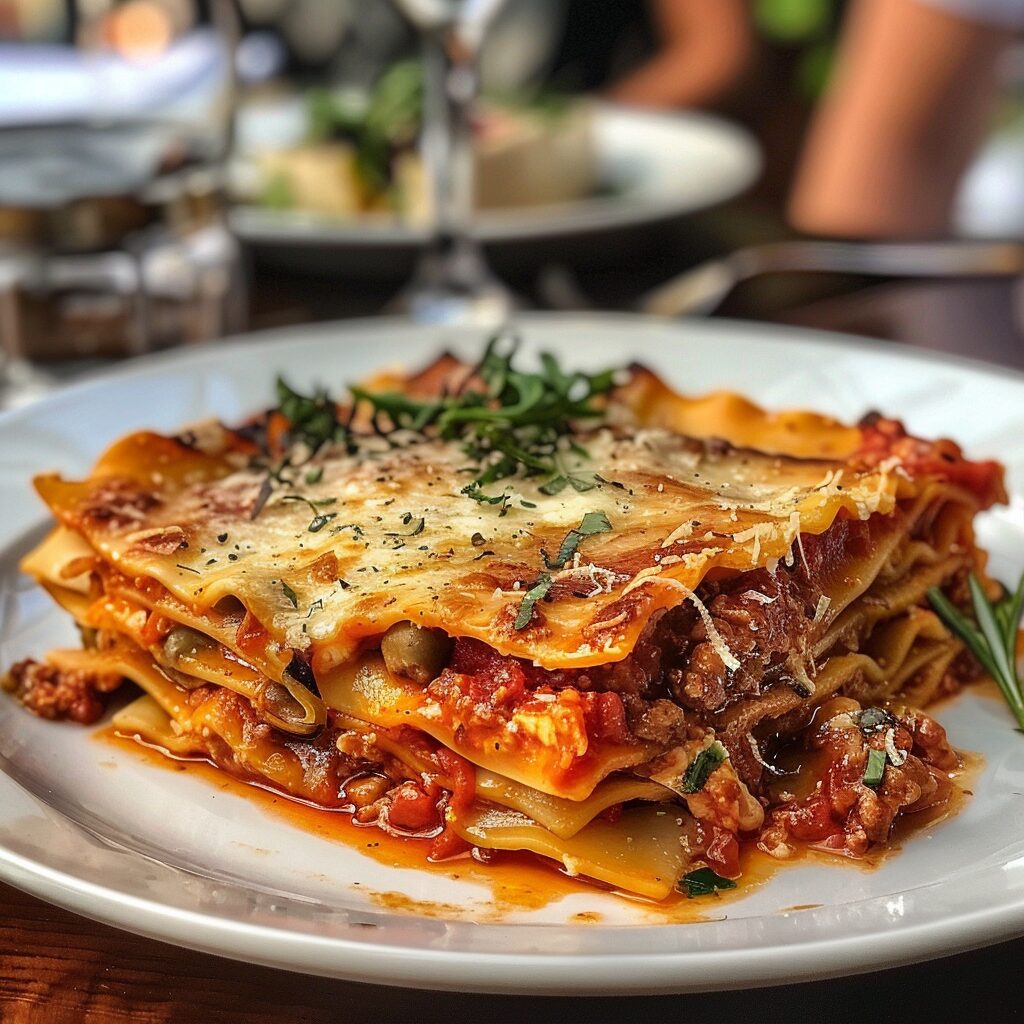Ever wondered why lasagna at a restaurant often seems so irresistibly better than what most of us whip up at home? This isn’t just a fluke or your cooking skills at question—it’s a fine orchestration of quality ingredients, culinary techniques, and even some psychological plays that restaurants master. Let’s peel back the layers of this delicious mystery and see what makes restaurant lasagna stand out so distinctly from our home kitchens.
1. Superior Ingredients
One of the critical factors why restaurant lasagna often tastes better is the use of high-quality, fresh ingredients. Professional chefs select the finest cheeses, the freshest produce, and premium cuts of meat, which contribute to a richer and more flavorful dish.
Moreover, many restaurants prepare their pasta fresh daily. This not only gives a delightful texture but also absorbs the sauce better, enhancing the overall flavor of the lasagna. Dried pasta from a box just can’t compete with that made-from-scratch freshness.
Additionally, chefs often use homemade sauces that simmer for hours. This long cooking process allows for a deeper development of flavors which most home cooks don’t replicate, usually due to time constraints.
2. Expert Layering Techniques
Another reason for the tastier outcome in restaurants lies in the meticulous layering technique chefs employ. Each layer of sauce, pasta, and cheese is thoughtfully assembled to create the perfect balance of textures and flavors.
Restaurants often layer their lasagna with a variety of cheeses, not just mozzarella. This variety can include ricotta, parmesan, and sometimes smoked provolone or gouda, each adding its unique flavor and texture to the dish.
In addition to cheese, the strategic addition of herbs like basil or oregano between the layers enhances the aroma and taste, something that might be overlooked in a hurried kitchen at home.
3. The Right Equipment
High-end kitchen equipment in restaurants also plays a crucial role. Large, industrial ovens provide consistent, even heat which helps in perfectly cooking the lasagna without drying it out.
This equipment, coupled with high-grade cookware like cast-iron pans, allows for better heat retention and distribution, leading to an evenly cooked, golden-brown crust that’s hard to achieve in most home ovens.
Even the timing of broiling the top layer to get that enticingly crispy cheese topping is expertly controlled in a professional setting, adding another layer of texture to the dish.
4. Mastery of Flavor Development
Chefs at restaurants spend a significant amount of time developing the flavors in their dishes. The sauces are usually simmered for several hours to concentrate flavors, a luxury most home cooks can’t afford.
This long simmering process enhances the depth and complexity of the tomato sauce, melding perfectly with the cheeses and meats. The result is a robust and cohesive flavor that seems to dance on the palate, outshining simpler home-made versions.
Moreover, the seasoning and spice ratios are meticulously calculated, ensuring that every bite is a burst of flavor.
5. The Psychology of Dining Out
Beyond the tangible aspects of ingredients and techniques, there’s also the psychological thrill of dining out. The ambiance of a restaurant, combined with the anticipation of eating out, can make the food seem more delightful.
Restaurants craft an entire experience, from the dim lighting and soft music to the attentiveness of the staff, which subtly enhances how we perceive the taste of the food.
The simple fact that someone else is doing the cooking and cleaning adds to the enjoyment of the meal, letting us relax and savor the lasagna without the distractions of preparation or cleanup.
6. Constant Refinement of Recipes
Restaurant chefs regularly tweak and refine their lasagna recipes based on customer feedback and their professional assessments. This continuous improvement process ensures that the lasagna you eat is a result of numerous optimizations.
From adjusting the salt in the ricotta to changing the herb mix in the sauce, every detail is considered and refined to perfection over time.
This kind of dedicated culinary development is something that’s quite challenging to maintain at the same level in a home setting.
7. Presentation and Serving
Finally, the presentation of lasagna in restaurants often makes it more appealing. The dish is beautifully plated, sometimes garnished with fresh herbs, and served steaming hot, directly from the oven to your table.
This immediate serving ensures that the texture and temperature are perfect, which greatly influences the flavor and overall dining experience.
At home, lasagna might sit for a while before everyone gathers to eat, which can affect its taste and texture.
To wrap up, while you might think that your lasagna should rival that of a good restaurant, remember that these culinary establishments have mastered the art of lasagna making down to a science. From the superior ingredients and expert techniques to the psychological effects of dining out, these factors combine to make restaurant lasagna often taste better. Next time you dine out, take a moment to appreciate the craft that goes into making that perfect plate of lasagna!

